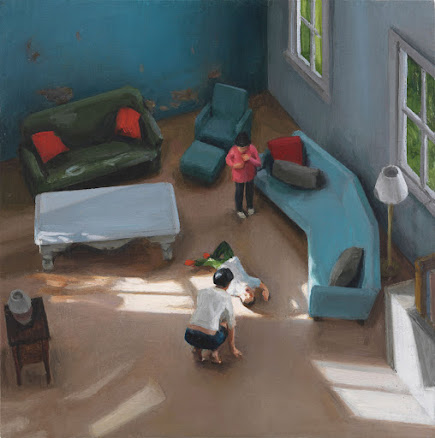References and Influences
Thought I'd create a post showing any influences on this body of work I feel I may have missed out in the rest of the posts!..
looking at the webpage of Lori Nix and Kathleen Gerber. On their page I found several essays that had been written as critiques of their work and explained the qualities that made it stand out. I found a great deal of very useful info and several passages that really helped me understand what it was I was trying to do with my own work.
Lori Nix clarifies that she is a photographer above all else, although is only behind a camera maybe once or twice a year, with each miniature taking around 6-7 months to build, Nix did not see herself as a sculptor, in fact, after completing each model she scraps them entirely, this would also come to be an important discovery in my work as I intend for these models to be viewed only through print when completed and slowly aged step by step.
https://www.youtube.com/watch?v=nZh3Oi7d0q0&t=56s
http://www.lorinix.net/essays-1
"Pictures enable us to imagine some thing as something – in the sense of a scene. This is made possible through the alternation of closeness and distance – and is also valid for experiences in extreme situations, such as a disaster or even the Apocalypse"
As I like to use photography and with my study in to the Japanese sense of space earlier in the year, this was a great passage to come across.
"Scenarios are neither forecasts nor visions of the future, but analytical explorations of possibilities" - Eva Horn
This is written in to the same article but is a quote from a German author who is a lecturer at the University of Vienna, from her book 'The Future as a disaster'. It helped me realise I wasn't trying to be factually accurate but just descriptive in my understanding of a series of possibilities.
I also found that another British comedian was a great help, James Acaster. He wrote a book called 'Perfect Sound, Whatever'. About the music from 2016, which he names as, undeniably the best year for music ever. He proceeds to try and prove this through the course of the book by naming overlooked musicians that released an album in 2016 and describing the processes some went through in making their work. Beyond finding some amazing background music to work to, I also found these descriptions of processes quite useful in some cases, so much so that I tried playing around with similar ideas in my own work, I'm not sure anything concrete came from it but it certainly helped with productivity in a time that I might've struggled otherwise, so grateful for it all the same.
Other Artists Work









No comments:
Post a Comment